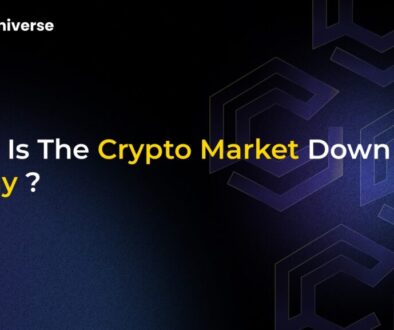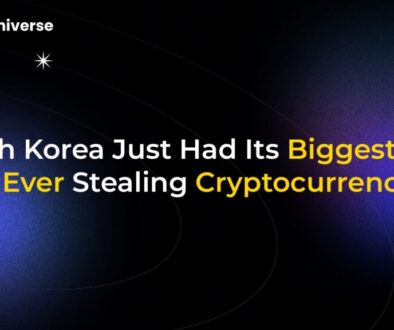Blurring Lines: How Traditional Finance and Crypto Are Converging

The Great Merge: Traditional Finance Meets the World of Crypto
The financial landscape is undergoing a significant transformation. The once distinct worlds of traditional finance (TradFi) and cryptocurrency are increasingly overlapping. Crypto firms and centralized exchanges are now rolling out familiar investment options typically found in traditional markets, effectively building bridges between these two financial systems. Why the shift? Investors are signaling a clear demand for more versatile products accessible from a single platform, driving this convergence.
As Gracy Chen, CEO of the major global crypto exchange Bitget, notes, this trend signifies a “growing synergy” between the established financial realm and the burgeoning digital asset space. This isn’t just talk; concrete developments are paving the way for this integration. Adding to the momentum, crypto investor sentiment has recently shown a positive shift, moving from ‘fear’ towards ‘neutral’ territory, indicating renewed confidence in the market.
Crypto Platforms Adopt Wall Street Strategies: The Rise of Familiar Investment Products
Gone are the days when crypto investment solely meant buying and holding individual coins. Crypto firms are now strategically embracing TradFi investment models to attract a wider audience and meet evolving investor needs. A key development is the introduction of crypto index funds.
- Mirroring Traditional Funds: These crypto index funds function much like their traditional counterparts, tracking a basket of digital assets.
- Diversification Simplified: They offer investors a way to gain diversified exposure to the crypto market without needing deep technical knowledge or managing multiple individual assets.
- Easier Access: These products cater to both crypto-native users and traditional investors looking for regulated and simpler ways to enter the digital asset market, often without the complexities of self-custody.
A standout example of this trend is the collaboration between Securitize, a leader in tokenizing real-world assets, and Mantle protocol. Together, they launched the MI4 Fund, a significant tokenized crypto index fund. This fund specifically aims to simplify crypto exposure for institutional investors, allowing them to generate yield from a diverse collection of cryptocurrencies through a compliant, blockchain-based product. This move clearly highlights the increasing institutional interest and the growing integration of traditional investment structures within the digital asset sector.
Bitcoin ETFs: Opening the Floodgates for Mainstream Investment
Perhaps one of the most significant catalysts bridging the TradFi-crypto gap has been the approval and launch of spot Bitcoin Exchange-Traded Funds (ETFs). This development represents a watershed moment for the industry.
Here’s why Bitcoin ETFs are so impactful:
- Familiar Investment Vehicle: ETFs are well-understood products within traditional finance. Investors can buy and sell shares of a Bitcoin ETF through their existing brokerage accounts, just like stocks.
- Regulated Access: The approval, notably by the SEC for several ETFs in January 2024, provides a regulated pathway for mainstream investors to gain exposure to Bitcoin’s price movements.
- Simplified Exposure: Investing in a Bitcoin ETF allows individuals and institutions to tap into Bitcoin’s potential without the technical hurdles of setting up crypto wallets, managing private keys, or navigating crypto exchanges directly.
The arrival of spot Bitcoin ETFs has fundamentally reshaped the crypto investment landscape, creating a vital gateway for a much broader range of investors to participate in the digital asset market, thereby accelerating the convergence with traditional finance.
Why Convergence Matters: Benefits and Future Opportunities
The merging of TradFi and Decentralized Finance (DeFi) offers compelling advantages for the entire financial ecosystem:
- Increased Efficiency: DeFi protocols, often built on smart contracts, can automate complex financial processes, potentially reducing the time, cost, and reliance on intermediaries common in traditional systems.
- Enhanced Transparency: Blockchain technology, the foundation of most cryptocurrencies, offers inherent transparency, which can be leveraged in combined financial products.
- Boosted Innovation: Collaboration between the established financial sector and the agile crypto space fosters innovation, leading to entirely new financial products and services that leverage the strengths of both worlds.
- Improved Liquidity & Capital Markets: Integrating these markets can inject new liquidity and create more dynamic, efficient capital markets.
- Greater Inclusivity: Over time, this convergence could lead to more accessible and inclusive financial services globally.
Furthermore, increasing regulatory clarity is empowering firms to operate more confidently across both traditional and decentralized frameworks. A crucial element supporting this integration is the development of robust digital asset custody solutions. Projections suggest that by 2025, a significant portion of global custodians will offer institutional-grade services for digital assets, further encouraging TradFi institutions to embrace DeFi and crypto assets.
The Road Ahead: An Integrated Financial Future
The lines between traditional finance and crypto are undeniably blurring. Driven by investor demand for unified platforms, the adoption of familiar investment models by crypto firms, and groundbreaking products like spot Bitcoin ETFs, the convergence is well underway. This synergy promises a future financial system characterized by greater efficiency, transparency, innovation, and accessibility. While challenges remain, the momentum suggests an inevitable integration, creating a landscape where traditional and digital finance work together, unlocking new opportunities for investors and institutions alike.


